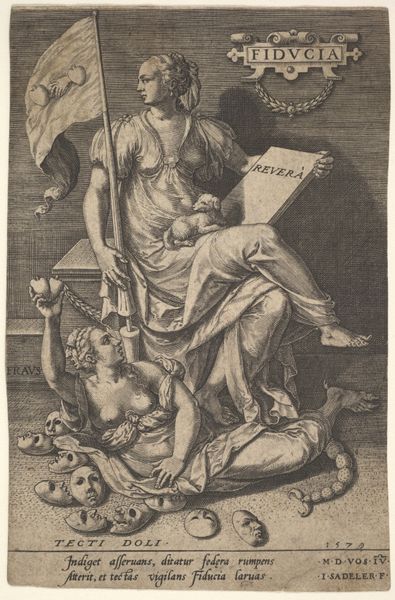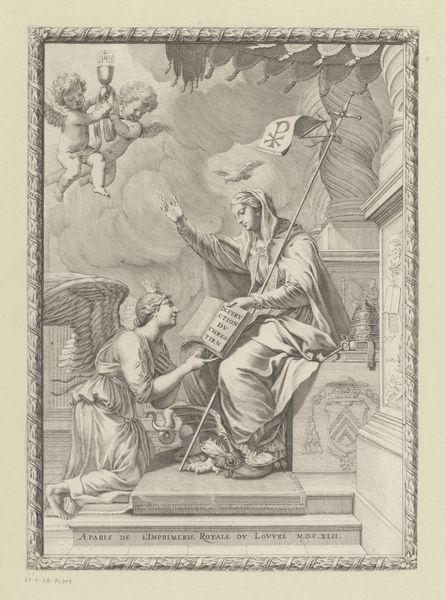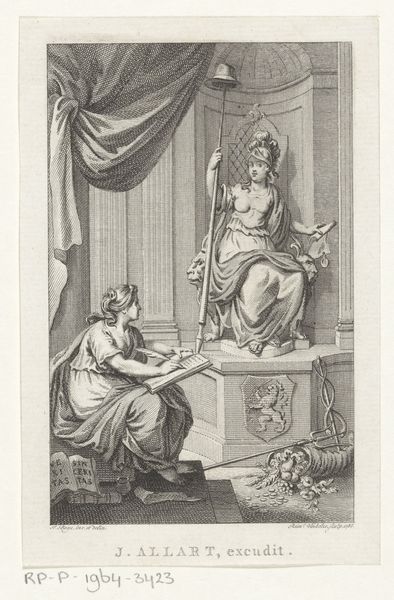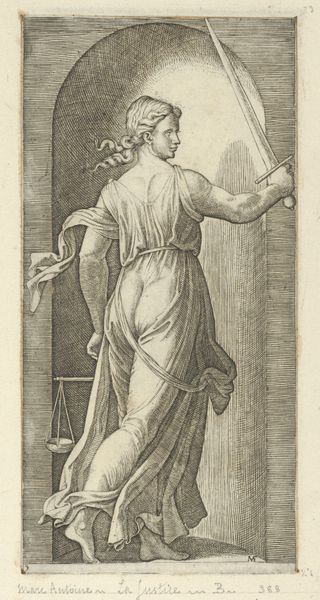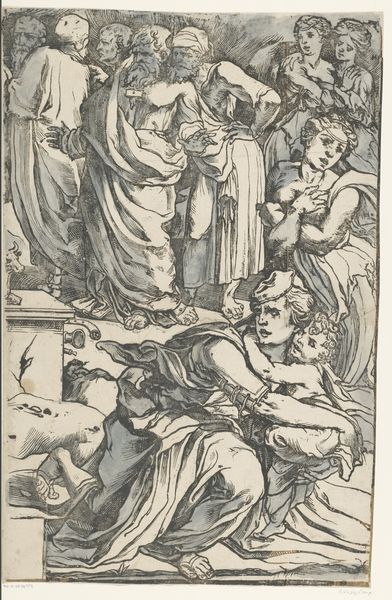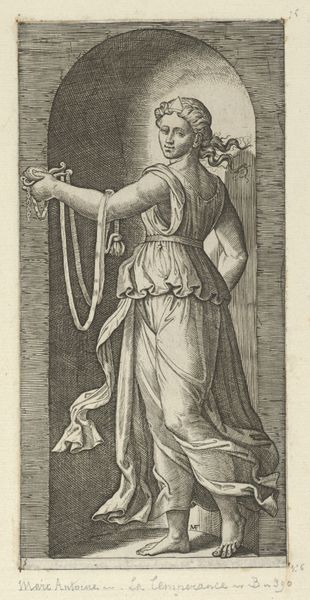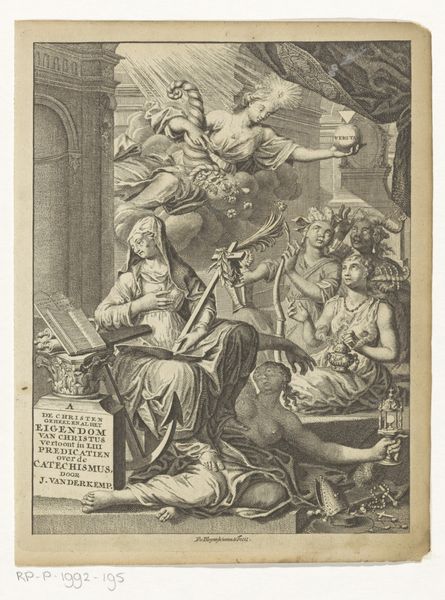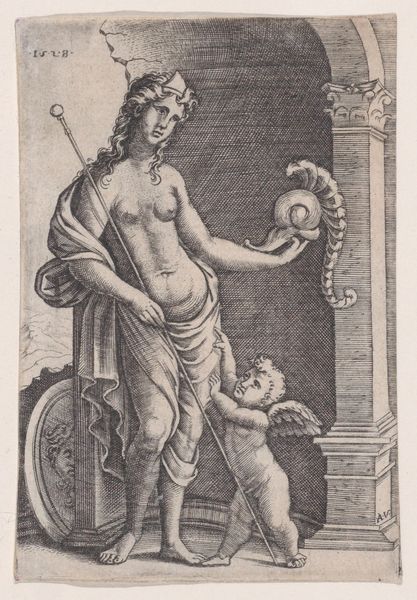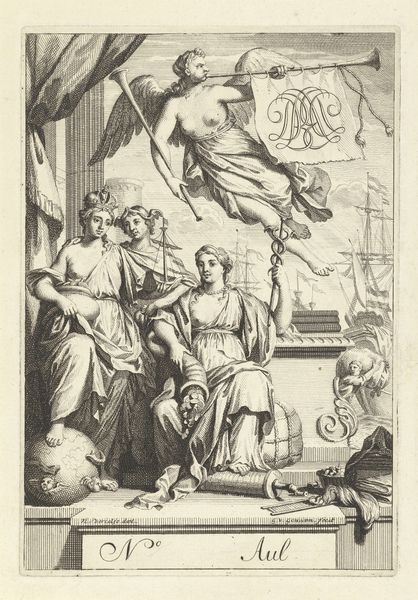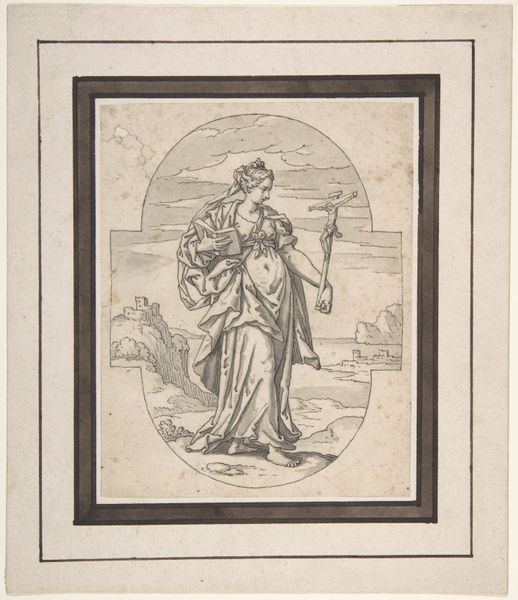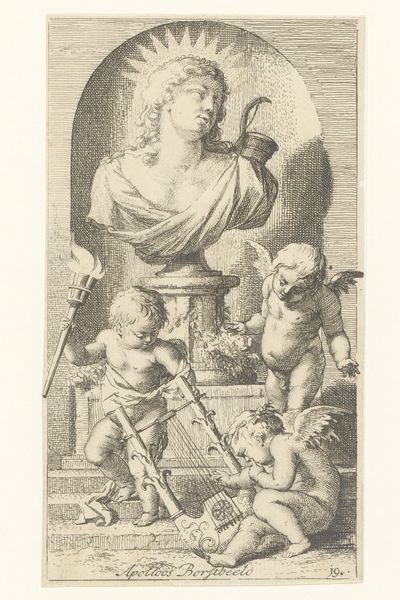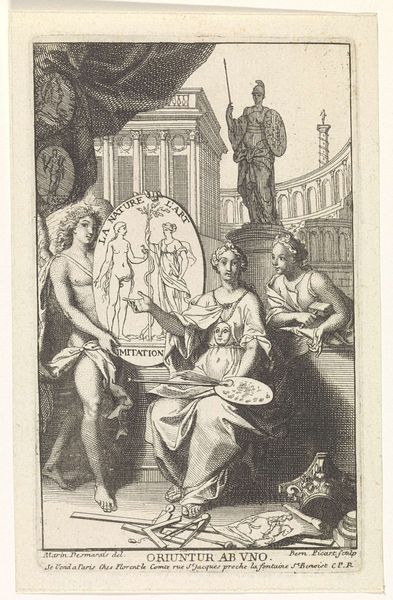
drawing, print, engraving
#
drawing
#
allegory
# print
#
caricature
#
figuration
#
form
#
11_renaissance
#
geometric
#
men
#
history-painting
#
engraving
Dimensions: Sheet (Trimmed): 7 3/16 × 5 1/8 in. (18.3 × 13 cm)
Copyright: Public Domain
Curator: Here we have "La Force," an engraving created sometime between 1510 and 1580, attributed to Jean Chartier. Editor: There's an imposing figure at the center of it all, an armed woman almost overflowing with confidence and strength. She certainly dominates the composition. Curator: Indeed. Chartier employs classical allegory here. The figure represents the virtue of Fortitude. Note how she's seated amidst symbols of justice, governance and even, to her left, an almost docile looking lion, suggesting that her strength is not brute force, but also reason, courage and control. Editor: You’re right, the composition leads your eye right to her steady gaze. But even the lion at her side is impeccably rendered in black and white contrast, adding a tactile quality. The rendering feels incredibly confident, yet meticulous. What were engravings like this used for? Curator: Engravings like these would often have been circulated as independent prints, popular and relatively affordable ways to access allegorical or historical imagery. They played a crucial role in disseminating ideas and visual concepts across geographic and social boundaries. They also served as models for other artists. Editor: So the imagery had cultural significance? How would these allegories of justice, and the symbols, influence their original viewers? Curator: Well, during the Renaissance, there was significant emphasis on virtue and moral conduct, particularly among rulers and the educated elite. The virtue of Fortitude served as an aspirational ideal for people in power and as a reminder to those seeking advancement in political or social spheres. The very idea of temperance through law. Editor: It’s easy to see why people appreciated this, it also is formally so impressive in its textures and forms. Curator: It also represents the relationship of art to governance. We understand that throughout its life this print may have served vastly different social functions as a mode of self-expression or record of symbolic representation. Editor: It does cause you to wonder about the people who handled it hundreds of years ago. "La Force" really brings so much strength together visually and intellectually. Curator: Absolutely, It is indeed a compelling image that really captures the artistic and social environment.
Comments
No comments
Be the first to comment and join the conversation on the ultimate creative platform.

